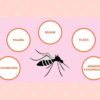The near and far of juxtaposition
This literary device of placing two contrasting concepts, characters, or ideas near or adjacent to each other is generously used by writers to create effect and highlight differences – Roopa Banerjee
 If you are served hot pasta with chilled vanilla ice-cream, would it make you pause as these two foods are unlikely companions on a plate? The placing of two elements with contrasting effect is juxtaposition. This literary device of placing two contrasting concepts, characters, or ideas near or adjacent to each other is generously used by writers to create effect and highlight differences.
If you are served hot pasta with chilled vanilla ice-cream, would it make you pause as these two foods are unlikely companions on a plate? The placing of two elements with contrasting effect is juxtaposition. This literary device of placing two contrasting concepts, characters, or ideas near or adjacent to each other is generously used by writers to create effect and highlight differences.
The word juxtaposition originates from the Latin word justa which means ‘beside or near’ and the French position. This origin initially created the French word ‘juxtaposition’ which through common usage became part and parcel of the English language. Juxtapose is its accepted verb form. In fact, juxtapose is one of the 30,000 most commonly used words of the Collins Dictionary.
Many English proverbs use juxtaposition for effect. For example, ‘What’s good for the goose is good for the gander’ or ‘When it rains, it pours’ are types of contrasting juxtapositions. Goose and gander are contrasting genders while rain and pour show a difference in magnitude. Similarly, ‘All’s fair in love and war’ is a contrast with love and war being opposites, just as ‘Beggars can’t be choosers’ is another study in contrast. ‘Making a mountain out of a molehill’ juxtaposes the magnitude from small to big while ‘You can’t teach an old dog new tricks’ is another example of juxtaposition.
‘When the cat’s away the mice will play’ is a clever instance of juxtaposition as the contrast is not so obvious and yet the cat is an authoritative figure, while the mice remain the submissive entity. It conveys the meaning that, without an authority figure watching over them, people will do what they want.
Literature abounds in juxtaposition. The famous opening lines of A Tale of Two Cities by Charles Dickens are, without doubt, the most perfect and extended example of this literary device. “It was the best of times, it was the worst of times, it was the age of wisdom, it was the age of foolishness, it was the epoch of belief, it was the epoch of incredulity, it was the season of Light, it was the season of Darkness, it was the spring of hope, it was the winter of despair, we had everything before us, we had nothing before us, we were all going direct to Heaven, we were all going direct the other way.”
The title A Tale of Two Cities implies the comparison of two places and the opening paragraph, filled with juxtapositions, sets the theme of contrasting doubles continuing throughout the book. The epic novel goes on to highlight the powerful struggle between love and hatred, freedom and oppression, and good and evil that lead up to the French Revolution. For students of this literary device, reading A Tale of Cities is a great way to understand how juxtaposition can aid and abet an author’s theme.
Another interesting example of juxtaposition in literature is from Anna Karenina by Leo Tolstoy, who famously wrote “Happy families are all alike; every unhappy family is unhappy in its own way.” The difference between happy and unhappy families is juxtaposed poetically, enticing the reader to delve further to understand the difference between families.
Robert Frost’s poem The Road Not Taken has the literal juxtaposition of two paths, which translates into the metaphorical juxtaposition of two possible decisions in life.
To conclude, here are some interesting thoughts on juxtaposition:
• Dreams of happiness are often juxtaposed with sadness.
• It is interesting to juxtapose the lifestyle of today’s teenagers with their grandparents’ generation.
• Nightmares can be juxtaposed with daydreams.
• It is easy to juxtapose things that are opposites.
















Add comment